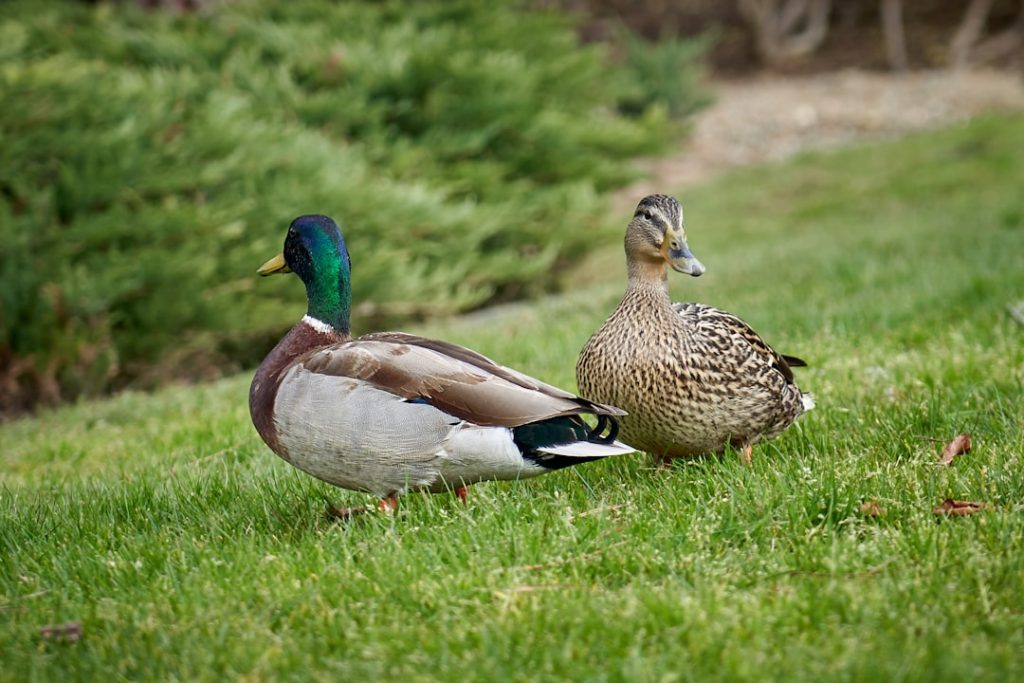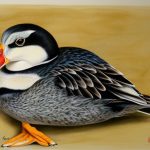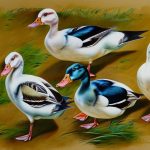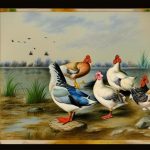Flightless duck breeds are a unique and fascinating group of waterfowl that have evolved to be unable to fly. These breeds have captured the interest of bird enthusiasts and conservationists alike due to their distinct characteristics and behaviors. While most ducks are known for their ability to take to the skies, flightless duck breeds have adapted to a life on the ground and in the water. This adaptation has led to a number of unique traits and behaviors that set them apart from their flying counterparts. In this article, we will explore the characteristics, history, conservation efforts, challenges, and future prospects of flightless duck breeds, shedding light on these remarkable birds and the efforts being made to protect them.
Table of Contents
- 1 Characteristics of Flightless Duck Breeds
- 2 History and Origins of Flightless Duck Breeds
- 3 Conservation Efforts for Flightless Duck Breeds
- 4 Challenges Faced by Flightless Duck Breeds
- 5 Unique Behaviors and Adaptations of Flightless Duck Breeds
- 6 Future Prospects for Flightless Duck Breeds
- 7 FAQs
Key Takeaways
- Flightless duck breeds are a unique and interesting group of ducks that have evolved to be unable to fly.
- These breeds are known for their distinct physical characteristics, such as short wings and heavy bodies, which prevent them from taking flight.
- The history and origins of flightless duck breeds can be traced back to specific regions and environments where they have adapted to their flightless lifestyle.
- Conservation efforts for flightless duck breeds are crucial in order to protect and preserve these unique and often endangered species.
- Flightless duck breeds face various challenges, including habitat loss, predation, and competition from other species, which threaten their survival in the wild.
Characteristics of Flightless Duck Breeds
Flightless duck breeds are known for their distinct physical characteristics that set them apart from other duck species. These breeds typically have shorter wings and larger bodies, which make them less aerodynamic and unable to achieve flight. Additionally, flightless duck breeds often have stronger legs and feet, which are well-suited for walking and swimming rather than flying. Their plumage is also adapted for a life on the ground, with dense and waterproof feathers that help them stay buoyant in the water. In terms of behavior, flightless duck breeds are known for their strong swimming abilities and their preference for living in wetland habitats. They are also skilled at foraging for food on land and in the water, using their specialized bills to sift through mud and vegetation for insects, small fish, and aquatic plants. Overall, flightless duck breeds have a unique set of physical and behavioral characteristics that make them well-suited for a life without flight.
History and Origins of Flightless Duck Breeds
The history and origins of flightless duck breeds can be traced back to their natural habitats in regions such as New Zealand, Madagascar, and the islands of the Indian Ocean. These isolated environments provided the perfect conditions for the evolution of flightless ducks, as there were no natural predators that posed a threat to them in the air. Over time, these ducks adapted to a life on the ground and in the water, losing their ability to fly but gaining other physical and behavioral traits that helped them thrive in their unique environments. The exact timeline of when flightless duck breeds first emerged is not entirely clear, but it is believed that they have been present in their respective regions for thousands of years. As human activity and introduced predators began to pose a threat to these birds, their populations began to decline, leading to conservation efforts to protect and preserve these unique species.
Conservation Efforts for Flightless Duck Breeds
Conservation efforts for flightless duck breeds have become increasingly important as human activity and introduced predators have posed significant threats to their populations. Organizations and conservationists have been working diligently to protect these birds and their habitats through a variety of initiatives. These efforts include habitat restoration projects, captive breeding programs, predator control measures, and public education and outreach campaigns. By restoring wetland habitats and controlling invasive species, conservationists aim to create safe environments where flightless duck breeds can thrive. Captive breeding programs also play a crucial role in ensuring the survival of these birds, as they provide a safety net for populations that are at risk of extinction. Additionally, public education and outreach campaigns help raise awareness about the importance of protecting flightless duck breeds and their habitats, inspiring people to take action to support conservation efforts. Overall, these conservation initiatives are essential for safeguarding the future of flightless duck breeds and ensuring that they continue to play a vital role in their ecosystems.
Challenges Faced by Flightless Duck Breeds
Flightless duck breeds face a number of challenges that threaten their survival, including habitat loss, introduced predators, pollution, and climate change. As wetland habitats continue to be degraded and destroyed by human activity, flightless duck breeds lose crucial areas where they can feed, breed, and raise their young. Additionally, introduced predators such as rats, cats, and dogs pose a significant threat to flightless duck populations, as they prey on eggs, chicks, and adult birds. Pollution from agricultural runoff and urban development also impacts the water quality of wetland habitats, affecting the food sources and health of flightless duck breeds. Furthermore, climate change poses a long-term threat to these birds, as rising sea levels and extreme weather events can disrupt their habitats and food sources. These challenges highlight the urgent need for conservation efforts to protect flightless duck breeds and address the factors that are putting them at risk.
Unique Behaviors and Adaptations of Flightless Duck Breeds

Flightless duck breeds have developed a range of unique behaviors and adaptations that enable them to thrive in their environments without the ability to fly. One notable adaptation is their strong swimming abilities, which allow them to navigate through wetland habitats with ease. Their specialized bills are also well-suited for foraging in mud and water, enabling them to find food sources that other ducks may not be able to access. Flightless duck breeds are also known for their social behaviors, often forming tight-knit groups within their populations. This social structure helps them communicate with one another and provides safety in numbers against potential predators. Additionally, flightless duck breeds have adapted to be primarily active during dawn and dusk, which helps them avoid predators while still being able to find food and engage in social interactions. These unique behaviors and adaptations showcase the remarkable resilience of flightless duck breeds in the face of environmental challenges.
Future Prospects for Flightless Duck Breeds
The future prospects for flightless duck breeds depend on the success of ongoing conservation efforts and the ability to address the challenges they face. With continued support for habitat restoration, captive breeding programs, predator control measures, and public education initiatives, there is hope that flightless duck breeds can recover and thrive in their natural environments. By raising awareness about the importance of protecting these birds and their habitats, conservationists can inspire people to take action to support their survival. Additionally, addressing factors such as habitat loss, introduced predators, pollution, and climate change is crucial for ensuring the long-term viability of flightless duck populations. With concerted efforts from organizations, governments, and individuals around the world, there is potential for flightless duck breeds to continue playing a vital role in their ecosystems for generations to come.
If you’re interested in learning more about flightless duck breeds, you might also want to check out this informative article on how to care for goslings at PoultryWizard. Understanding the care and breeding of different poultry species can provide valuable insights into the unique characteristics and needs of various birds.
FAQs
What are flightless duck breeds?
Flightless duck breeds are domesticated duck species that have lost the ability to fly due to selective breeding. These ducks are typically larger and heavier than their wild counterparts, which makes them unable to take flight.
What are some examples of flightless duck breeds?
Some examples of flightless duck breeds include the Indian Runner, the Khaki Campbell, the Pekin, and the Aylesbury. These breeds are popular for their meat and egg production, as well as their calm and friendly demeanor.
Why are flightless duck breeds unable to fly?
Flightless duck breeds have been selectively bred for traits that make them better suited for domestication, such as increased body size and weight. These traits, however, also make them unable to achieve the lift necessary for flight.
What are the advantages of raising flightless duck breeds?
Raising flightless duck breeds can be advantageous for farmers and homesteaders, as these ducks are typically more docile and easier to manage than their wild counterparts. They are also valued for their high egg and meat production.
How do you care for flightless duck breeds?
Caring for flightless duck breeds involves providing them with a suitable living environment, a balanced diet, and regular access to water for swimming and foraging. Additionally, regular health checks and protection from predators are important for their well-being.
Meet Walter, the feathered-friend fanatic of Florida! Nestled in the sunshine state, Walter struts through life with his feathered companions, clucking his way to happiness. With a coop that’s fancier than a five-star hotel, he’s the Don Juan of the chicken world. When he’s not teaching his hens to do the cha-cha, you’ll find him in a heated debate with his prized rooster, Sir Clucks-a-Lot. Walter’s poultry passion is no yolk; he’s the sunny-side-up guy you never knew you needed in your flock of friends!







